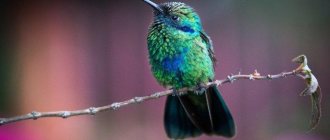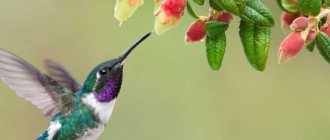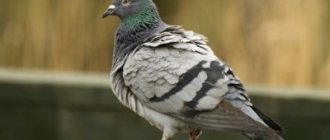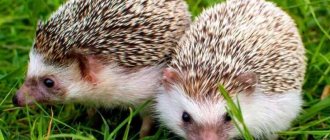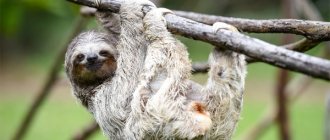Photo: placepic.ru At first glance, swifts resemble swallows, but in reality they do not have much in common. This is a true champion in speed of movement through the air. There are recorded figures of 170 km/h! How do you like these impressive numbers? And if you want to learn more about swifts, this article is especially for you!
What a swift looks like: photo and description of the bird
What does a swift look like? The photo of the bird shows a small individual with a gray or gray-black color. The body of the swift is of medium build, the head is large in relation to the body. The wings are elongated, long, composed of hard elastic feathers. The swift's beak is hook-shaped, small, pointed. The tail is long, composed of hard feathers, forked towards the end. In relation to the body of the bird, the legs are small and thin. But they are incredibly tenacious. With the help of claws and dexterous paws, swiftlets move along tree bark, stone and other natural substrates.
The color of the bird is unremarkable. It is a gray bird with sparse wavy stripes on its wings, tail and back. The black swift is found in nature.
photo of a swift in flight
general description
Swifts are amazing birds that can neither walk nor swim, but they have no equal in flight. They live in flocks, and today they are increasingly found in cities.
Appearance of a swift
Despite their external resemblance to swallows, they have no species relationship. In addition, swifts fly completely differently: they are faster, but not as maneuverable. And they never sit on wires.
The plumage of swifts is gray, with black and white splashes. The colors of males and females are almost identical, so it is difficult even for professionals to distinguish them. The average body length is about 20 cm, and at the same time they have a large head and large black eyes, which help in hunting.
The mouth opening of swifts is wide, but the beak is small. The paws are small, with four toes pointing forward. They cannot walk normally on the ground, but they cling perfectly even to steep rocks. The wingspan reaches 55 cm, while they are elongated and slightly curved.
Photo: zen.yandex.ru
Takeoff
Swifts have very short small legs and a large wingspan relative to the body. Therefore, they practically cannot take off from a flat horizontal surface - the wings simply hit the plane. They definitely need a little elevation.
Photo: beesona.ru
Maneuverability
The maneuverability of swifts ensures their amazing ability to use their wings asynchronously. As long as one wing moves faster than the other, the bird is able to take the sharpest turns without slowing down.
Photo: localfeed.ru
How long do swifts live?
Life expectancy is determined by the species. Black swifts, common in our latitudes, live 8-9 years. But long-lived individuals are known, living up to 15-20 years.
Photo: krasivosti.pro
How is a swallow different from a swift?
A swift is a bird whose description has many similarities with a swallow. However, swifts and swallows have enough differences, knowing that it is impossible to confuse one type of bird with another.
Here are a few main differences:
- Swallows, smaller than swifts.
- The swift has a characteristic dark color with a small light spot on the chest. The swallow's breast is completely light.
- In flight, the swift does not fold its wings, as a swallow does.
- The swift is a noisier bird that makes characteristic calls while flying.
The similarity between a swallow and a swift lies in their forked tail. And also the shape of the body and head of the birds are very similar. If a person is not an ornithologist and is not interested in birds, he will easily confuse these two species.
Barn swallow with forked tail: description
Interesting information. The swallow can be called one of the cutest migratory birds. The size of this messenger of spring is very small, its body length is 15-20 cm, the span of its long sharp wings is 30-35 cm. The small creature weighs only 18-20 g. The swallow can be easily recognized by its long tail, which has a deep fork-shaped cut.
The plumage of the bird is blue-black above, pale beige below. On the forehead and front of the neck, the barn swallow has light spots with a brown tint. You can distinguish a female from a male by its tail; in a “girl” it is slightly shorter than in a “boy”. The color of the male is more saturated, the plumage of the females is less contrasting.
Where do swifts live in the wild?
This bird can be seen almost anywhere in the world! There are no swifts, perhaps, only in the icy expanses of Antarctica. The habitat is varied and wide. They settle in forests and forested park areas. The open steppe terrain does not repel swifts either. These birds willingly settle in cities. They inhabit rocky terrain in mountainous regions. These are incredibly active birds. Swifts spend almost all their time in flight and only for a short period at night do they go to sleep, settling in rocky niches, on tree branches, and in roof openings.
Swift bird photo
Habitats and lifestyle
This species of bird makes migratory flights. In the summer, they settle in large numbers in Western Siberia, China and so on to Spain. In the northern part of the planet, swifts choose Finland, Norway and the subarctic zones of Russia as nesting places. Black swifts breed their offspring in the southern territories:
- Algeria;
- Israel;
- Lebanon;
- Morocco:
- Near East.
Birds winter in southern Africa, as well as on the equator. They live most comfortably there. Swifts feel best when in flight. They always fly rapidly, and to turn they make a large turn . A distinctive feature of black swifts is the fact that while in flight the bird can:
- There is;
- mate;
- sleep.
There is no other bird in the world that can do this.
They can spend 2-4 years in the air without landing on the ground. During the nesting season, they are forced to build nests for breeding. Basically, these birds live in flocks and always nest in colonies. Swifts have 4 toes on their paws, pointing to the side, so it is difficult for them to maintain balance while sitting on the surface of the ground. They cannot move - jump, walk on their paws. For this reason, swifts are always in flight to protect themselves. It is believed that these birds are the fastest, since their flight speed reaches 120 km/h , and swallows can reach a maximum speed of 60 km/h. Swifts are always active from morning until evening. Their lifespan is about 20 years.
Number and population
In the countries of Eastern Europe and Northern Asia, within the already established distribution area, black siskins are found everywhere in numerous groups. On the territory of Siberia, a significant number of this species is found in pine landscapes, it can inhabit forests, but the population limitation is noted in taiga territories.
In recent years, black siskins are increasingly found in large numbers in urban areas adjacent to vast natural water areas. Especially many individuals are observed in St. Petersburg, Klaipeda, Kaliningrad and such large southern cities as Kyiv and Lvov, as well as Dushanbe.
Types of swifts
There are many varieties in nature. Let us give a brief description of the most common species of this bird.
Black
This species is also called “tower swift.” The color of this bird is characterized by dark brown plumage with a rich green tint. These swifts reach large sizes. The flight speed of this species reaches 111 kilometers per hour.
The black swift lives in the vastness of the European space. You can meet such a bird in the central regions of Asia, in Russia. The bird winters in Thailand and India.
Photo of a black swift
White-belted species
This bird differs from its other relatives in its characteristic color features. On the body in the area between the abdomen and tail, this bird has a wide white belt. The remaining parts of the body, wings, and tail are painted in a classic dark gray color.
These swifts are noisy and have a particularly screeching voice.
The habitat of this species extends to European countries, the USA, New Zealand, and Australia. The bird is also found in Asian countries.
Photo of a white-banded swift
Pale swift
This species of bird is almost no different from the black swift, except, perhaps, in color. The color of the bird is light gray with a brownish belly. If we consider the structure of the bird’s body, we can note a certain stockiness, “heaviness” of characteristic features.
This species is endowed with a bright, shrill voice. If a pale swift flies in the sky, it’s not surprising to hear a booming “vriiii-e” in its performance.
The species lives in the vast expanses of Africa, Southern and Central Europe, and the East.
Lifestyle
The lifestyle of swifts seems simply fantastic. How can you sleep in the air? But these birds succeed! Moreover, they rest safely for several hours in a row, occasionally flapping their wings. Cases have been recorded when the swift did not land on the ground for more than six months.
What do swifts eat?
The diet of swifts consists of small flying insects. If weather conditions do not allow swifts to find food, they are forced to change their place of residence. When a bird begins to experience hunger, its heat exchange is disrupted, which can lead to “trance sleep.” This feature of the body helps birds survive even a ten-day fast, and thanks to this, chicks survive without food if their parents fly too far.
Reproduction and nesting
The swift tries to nest where no animal or person can reach. It could be a crevice in a sheer rock. However, even within the city limits, a bird can find a place for itself where it can build a nest.
So, they very often like a place under the roof, where only a climber can climb. In parks and forests, the bird uses the tallest trees for this, and its light weight helps it stay in the nest even when the tree sways strongly in the wind.
The swift finds nesting sites near steep cliffs
During nesting time, swifts arrive in small parties. Here, too, a lot depends on the weather.
In some cases, the arrival of a flock of these birds can be seen in April, and in others, after a long and protracted winter, only in mid-May.
The fact is that for normal existence and nesting, swifts require a large amount of food, and therefore the bird waits until most of the insects have already migrated to where the bird is about to fly.
Often flocks of these birds arrive after rains. They have learned to “catch” the cyclone and seem to be riding on its tail.
Thus, the bird’s arrival guarantees the onset of good weather, even for the next few days.
Swifts arrive in small batches during nesting
Almost immediately after arrival, the bird begins nesting. Building a nest can take about 8 days. On average, a swift lays 2-4 eggs.
They are white, without specks, small in size: 17*25 mm. Both parents incubate the eggs, not just the female. Incubation times also depend on the weather.
In good warm weather, 11 days will be enough for complete incubation, and in cold weather these periods will extend to 16 days.
If it starts to rain and the temperature outside drops, the bird has to spend a lot of time looking for insects for food, and then there is much less time left for incubation.
If the bird remains hungry to incubate eggs in the nest, then this will be of little use, because its body does not produce a sufficient amount of heat without food.
If the search for food gets really bad, then the swifts completely relieve themselves of nesting worries. In this case, they throw the eggs out of the nest, even if there are only a couple of days left until the end of incubation.
As soon as the chicks hatch, they spend the first time in the nest. These terms may vary and depend on many factors. On average, they fly out of the nest on the 38th day of life, and sometimes a little earlier.
If it rains constantly outside, and in general the weather is not favorable to flights, small swifts can sit in the nest for 56 days. All this time, parents feed their babies, often flying to the nest.
They bring with them a “bag” of food in their beak - some kind of insect. During the day, an adult bird can fly to the nest to feed its chicks 30-40 times.
At the same time, an adult swift does not fly up to babies with one insect. The bird learned to “hoard” them, collecting them in its beak and gluing them with sticky saliva.
In each such “gastronomic bag” a bird can bring 400-1500 insects.
Thus, in good weather, the chicks receive about 40,000 insects per day. Photos of adult swifts feeding their chicks evoke tenderness and admiration among many.
The swift glues its nest together with saliva, which hardens very quickly
If the weather is bad, then adult swifts sometimes have to travel long distances in order to get food for themselves and their children. This distance can be measured in tens of kilometers.
Of course, having flown 60-70 km for food, parents cannot constantly return back to feed their chicks. During this period, the chicks fall into torpor, which helps them hold out until their parents arrive.
After the chick flies out of the nest, it is already able to look for food for itself. This often happens when the parents once again go in search of food. This is how the swift’s adult life begins.
Family life
These birds always build their nests very high and away from people. That is, so that during their absence the chicks are as safe as possible. Ideal for them is a mountain gorge. And within the city there is a hole between the roof and the wall, where people and other animals cannot climb.
If swifts choose a park or forest as their home, then the oldest and most branched tree that can withstand gusts of wind without strong swaying will be chosen. But even with strong gusts of wind, they hold on well with the help of sharp claws.
Offspring
The female usually lays 2 eggs, with rare exceptions there may be more. The eggs are elongated, whitish in color, length - 2.6 cm, width - 1.6 cm. The female incubates the eggs, and the male feeds her at this time.
Hatched chicks need food. Both parents take care of the offspring. During one visit of the parent, only one chick receives food.
Birds eat small and other insects. The male does not swallow the small ones one at a time, but collects them in his beak until they turn into a lump along with saliva. Only when the lump is ready does the swift swallow it or carry it to the swiftlets. Swifts are voracious, they kill a lot of insects, but most of them do not benefit humans.
Under the influence of external factors, when it becomes cool outside, the chicks’ body temperature may drop: 2-3ᵒ C above atmospheric. This state of absolute hunger can last 5-10 days. During this period, the shearer's body feeds on accumulated fat deposits.
Lifespan
The fastest bird in the world is the peregrine falcon (a type of falcon). Its limit is 300 km/h. But we are talking about dive speed, that is, movement from top to bottom, while the peregrine falcon makes horizontal flight no faster than 100 km/h, so in this sense, the needle-tailed swift is an absolute record holder!
It is said that the tower swift can spend years in the sky, resting, feeding and even mating on the fly. In fact, this information is somewhat exaggerated, although the reality is indeed impressive.
Thus, Swedish scientists (Lund University) installed special sensors on several dozen birds, and a few years later, having caught 19 individuals from the control group, analyzed the information received and published the results of the experiment in the journal Current Biology.
It turns out that during the year, black swifts behave like any other bird during the nesting period for two months, but the rest of the time they spend no more than 1% of their time out of flight.
Going to warm regions in August, the birds can next touch the ground only ten months later, having already returned to their homeland, while some individuals sometimes sit on tree branches during wintering, but, in principle, they do not feel any particular need for this.
Scientists have calculated that the tower swift can cover a distance equal to seven flights to the moon (meaning a round trip) during its life!
Oddly enough, the life of a black swift, so complex in terms of energy costs, is not so short. On average, birds live from seven to ten years, but there are cases when some individuals reached the “honorable” age of 20 years (the recorded record is 21 years).
The main enemies of birds
In nature, such an excellent flyer as the black swift has practically no enemies . However, swifts are hosts of specific parasites - cavity mites, which can cause quite serious diseases in both young birds and adult birds.
At the end of the nineteenth century, massive destruction of black swift nests was observed in Southern Europe. This situation was due to the popularity of the meat of the chicks of this species, which was considered a delicacy. Sometimes swifts, especially sick ones, become easy prey for birds of prey and cats.
Quite a large number of individuals die as a result of accidental collisions with wires on power lines.
How do swifts sleep?
In addition to the fact that the bird sleeps in flight, it manages to glide in one place in its sleep. Ornithologists at a university in Sweden have found out why this happens. As a result of radar and observations, the following patterns were revealed:
- Before going to bed, the swift gains a high altitude of about 3 thousand meters;
- changes its direction across to the wind, turning every 50-60 seconds.
Thanks to this method, the bird simply flies along a certain trajectory in one place. If the wind is moderate or weak, then the trajectory resembles a circle, if strong, then a diamond or square.
Wintering and lifestyle
The swift is a bird that prefers to spend the winter in warm regions, and with the onset of warm weather it always returns to its homeland. Swifts are loud and noisy; they like to fly not alone, but in flocks. Birds spend most of their lives in flight. They flap their wings frequently and fly quickly. The peculiarity of the species is the ability to perform gliding flights. When the weather permits, the birds compete with each other in the air, making sharp turns and emitting a loud cry.
The black swift is a species whose characteristic feature is the inability to walk on the ground. However, they can cling to sheer rocks and vertical walls thanks to their strong and strong paws.
What birds are similar to swifts?
Swifts and swallows have the greatest similarity! As mentioned earlier, many people confuse these birds.
The swift is vaguely reminiscent of a forest pipit - a bird of the wagtail family. She is small, nimble, loud.
You can compare the common nuthatch with this type of bird. The similarity between these birds lies in their small body size. The habitat and some gastronomic habits are somewhat similar.
However, in flight speed and activity level, swifts, perhaps, simply have no equal. This means that it makes no sense to compare other bird species with the swift family.
Photo of a swift on the hand
Migration
The question of whether swifts are migratory birds or not is easy to answer. Species living in areas with warm climates have a sedentary lifestyle. Species living in areas with cool autumn-winter periods are migratory birds. The main thing that swifts eat are insects, which disappear in winter. A bird can fast for up to 10 days. But then she will have to look for food, otherwise she will die. This is why swifts migrate from cold areas to countries with a predominantly warm climate for the winter. And, in the spring, when the swifts arrive, those familiar cries are heard again in the sky and restless birds scurry back and forth, as if reminding “Spring has come!” The warmth is back!
Swift eggs
Country and city swallows: interesting facts
A related species of the Barn Swallow is the City Swallow, which is the most common species of these migratory birds. Many interesting facts are known about their life:
- The swallow's song consists of sonorous "vit - vit", but when the birds notice danger, they alarm all members of the huge flock, warning about this with a loud "civil".
- It happens that the chicks from the last brood do not have time to get stronger and are not able to fly away with the flock to warmer climes with the onset of cold weather. In this case, the swallows' parents do not abandon their still weak children and remain with them until they are able to fly for the winter.
- While wintering in Africa, swallows feed on ants; these birds really like this variety in the usual menu of flying insects.
- Relatively recently, scientists managed to learn, thanks to the banding of swallows, that after spending the summer in Central Europe, these birds go to South Africa for the winter.
- During long flights to warm regions, swallows, unfortunately, often die from exhaustion and hunger.
- The barn swallow is unable to live without singing. She sings when she is looking for food in flight, she sings when she is swinging, sitting on wires, and she sings when she is just resting.
- When in Ancient Rome, after chariot races, the hero who took first place was announced, the winner’s colors were tied to the swallow’s feet and the bird was released into the sky as a symbol of victory and free flight.
Nesting and offspring
An important condition for nesting of this bird is the choice of place! Swift nests are located at a height of at least three meters. Usually the bird begins laying eggs in the spring, having returned from wintering in warm countries. The female incubates the eggs. And the male helps feed the chick, and also gets food for himself and the female.
Typically, a swift lays 2-4 eggs. The first-born are considered the hardiest; the rest of the offspring do not always survive in full force.
Photo of a swift chick
Reproduction and lifespan
Frigatebirds are monogamous birds, choosing a partner once for their entire life. At the time of reproduction and incubation, they are not in their usual aerial territory, therefore they are very vulnerable. Realizing this, they nest on deserted coasts or islands, where there are no predators.
The male contenders are the first to fly to the nesting site, sit on trees and begin hilariously inflating their crop sacs, making guttural sounds that attract the female. The leather bag becomes so large that the suitor has to lift his head high. And future girlfriends fly above them and choose a mate from above.
This may last for several days. Ultimately, females choose the partner with the largest throat pouch. It is this item that serves as the element that seals the marriage. Whose bag the flighty female rubs against will be the chosen one. In fact, she records the choice of a partner with this affectionate movement. Only after this they arrange a place for future hatching of chicks.
The nest is built on tree branches near water. They may choose shrubs or raised areas on the ground for nesting, but much less frequently. The future place for laying eggs resembles a kind of platform; it is built from branches, twigs, leaves and other plant elements. There is usually one egg in a clutch, although there are observations that some species of frigatebirds lay up to 3 eggs.
Parents incubate their offspring alternately, changing after 3, 6 or more days. The chicks hatch after six or seven weeks completely naked. They are heated by one of the parents. Later they develop white fluff. They acquire full plumage only after five months.
Parents feed their babies for a long time. Even after the chicks grow up and begin to fly independently, adult birds continue to feed them. They become sexually mature at 5-7 years of age. In the wild, a frigate bird can live 25-29 years.
What to feed a swift at home?
If it so happens that the bird has entered the house and needs human help, it is important to provide it with proper feeding.
Since the basis of nutrition for these birds are insects, it is necessary to feed the swift with them. Larvae and pupae of ants, crickets, and Turkmen cockroaches are suitable food for the bird. All insects must be caught in the wild. You should not buy commercially bred insects in captivity.
Photo of haircut
If you want to feed a swallow or a swift, what is best to give?
If the bird lives at home permanently, it should purchase food from a pet store or house crickets. If special nutrition is not available, other options are possible.
- When you take in a lonely chick or a sick adult swallow to feed, give it raw or boiled lean meat in the form of minced meat. Offer food during the day, the serving size is about the size of a walnut, every couple of hours. They should not be given bread. For chicks, cottage cheese, carrots, eggs, and fish food in ground and mixed form are suitable as a supplement to the diet. Children also need special vitamins from a veterinary pharmacy.
- Swifts are more whimsical; as an alternative to insects, you can offer a little low-fat cottage cheese or fish food. The main diet is only insects, otherwise the health of the bird can be ruined.
